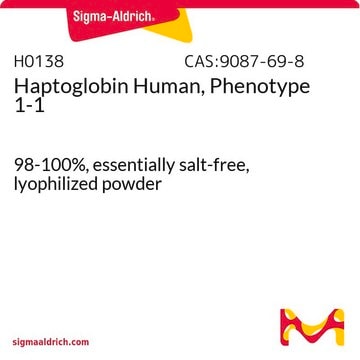C6534
Anti-Chicken Egg Albumin antibody produced in rabbit
whole antiserum
Sinónimos:
Anti-Albumin, chicken egg
About This Item
Productos recomendados
origen biológico
rabbit
conjugado
unconjugated
forma del anticuerpo
whole antiserum
tipo de anticuerpo
primary antibodies
clon
polyclonal
contiene
15 mM sodium azide
reactividad de especies
chicken
técnicas
indirect ELISA: 1:80,000
quantitative precipitin assay: 3-5 mg/mL
Condiciones de envío
dry ice
temp. de almacenamiento
−20°C
modificación del objetivo postraduccional
unmodified
Información sobre el gen
chicken ... Alb(396197)
Descripción general
Aplicación
- quantitative precipitin assay
- indirect enzyme linked immunoassay (ELISA)
- development of nonimmune rabbit antiserum against chicken ovalbumin
Acciones bioquímicas o fisiológicas
Nota de preparación
Cláusula de descargo de responsabilidad
Not finding the right product?
Try our Herramienta de selección de productos.
Código de clase de almacenamiento
10 - Combustible liquids
Clase de riesgo para el agua (WGK)
WGK 3
Punto de inflamabilidad (°F)
Not applicable
Punto de inflamabilidad (°C)
Not applicable
Certificados de análisis (COA)
Busque Certificados de análisis (COA) introduciendo el número de lote del producto. Los números de lote se encuentran en la etiqueta del producto después de las palabras «Lot» o «Batch»
¿Ya tiene este producto?
Encuentre la documentación para los productos que ha comprado recientemente en la Biblioteca de documentos.
Los clientes también vieron
Nuestro equipo de científicos tiene experiencia en todas las áreas de investigación: Ciencias de la vida, Ciencia de los materiales, Síntesis química, Cromatografía, Analítica y muchas otras.
Póngase en contacto con el Servicio técnico













